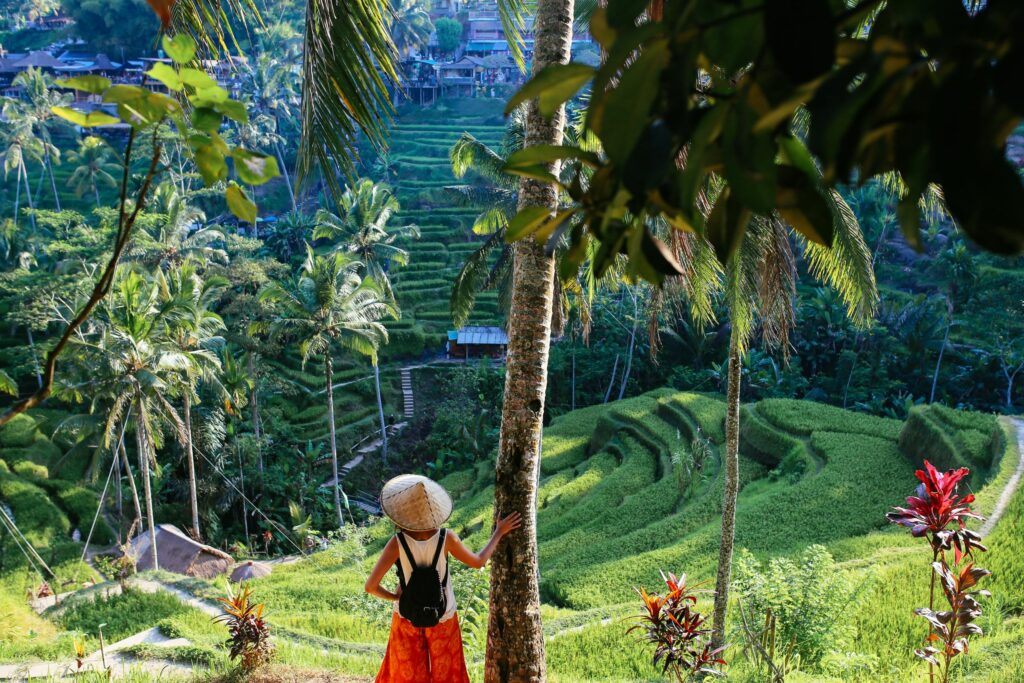Bali, a name that resonates with paradisiacal beaches, vibrant culture, and lush landscapes, holds an even richer treasure within its linguistic heritage. The native language of Bali, an intricate tapestry of sounds and symbols, is not just a tool for communication but a living testament to the island’s history and identity. As we delve into the nuances of Balinese, we uncover more than just words; we find a unique worldview, a deep-seated spirituality, and a community’s heart and soul. This exploration is not just for linguists or cultural enthusiasts; it is for anyone captivated by the allure of Bali and eager to connect more profoundly with its people and traditions.
What is the Native Language of Bali?
The native language of Bali, known as Balinese or simply “Basa Bali,” is more than just a means of communication; it’s a gateway to understanding the island’s rich cultural heritage. As an Austronesian language, it shares roots with many other languages in the Indonesian archipelago and the Pacific region.
How is Balinese Spoken and Written?
Balinese is spoken with complexity that mirrors the island’s social structure. It employs three main levels of speech – low (basa ketah), middle (basa madia), and high (basa singgih) – each used depending on the social status of the speakers and the context of the conversation. Written Balinese, historically recorded on palm leaves, uses a script known as the Balinese script, a descendant of the ancient Brahmi script of India.
Where is Balinese Predominantly Used?
While Bahasa Indonesia is the national language of Indonesia, Balinese is predominantly spoken in Bali and parts of Lombok and Java. Bali uses it in daily communication, traditional ceremonies, arts, and education.
Benefits of Learning the Native Language of Bali
Learning the language can be immensely rewarding for anyone interested in truly experiencing Balinese culture. It opens doors to deeper connections with locals, a better understanding of traditional rituals, and an enriched travel experience. For students and professionals involved in cultural studies, anthropology, or linguistics, learning Balinese offers valuable insights into Austronesian languages and cultures.
Cultural Integration and Respect:
Learning Balinese demonstrates respect for the local culture and customs, fostering deeper connections with the community. It shows an appreciation for the island’s heritage and a willingness to immerse oneself in its traditions.
Enhanced Travel Experience:
Understanding the local language enhances the travel experience by allowing for more authentic interactions with locals, navigating local markets, understanding traditional performances, and appreciating the subtleties of Balinese culture.
Business and Networking Opportunities:
Speaking the language for professionals engaging with Balinese communities or businesses can open doors to local networks, facilitate smoother business transactions, and build trust with local partners.
Personal Growth and Cognitive Benefits:
Learning a new language like Balinese stimulates cognitive development, enhances problem-solving skills, and improves memory. It also offers a unique challenge that can be personally fulfilling.
Educational Value:
Students of anthropology, linguistics, and Asian studies can gain invaluable insights into Austronesian languages and Southeast Asian cultures through studying Balinese.
Artistic and Creative Inspiration:
Artists, writers, and musicians can find a wealth of inspiration in the language, from its poetic expressions to its role in local myths and artistic practices.
Social Engagement:
Speaking Balinese allows for participation in local events, festivals, and ceremonies, fostering a sense of belonging and community engagement.
Preservation of Linguistic Diversity:
Learning and using Balinese contributes to preserving linguistic diversity, an essential aspect of global cultural heritage.
Examples of Balinese in Use
Greetings and Common Phrases:
- “Om Swastiastu” (a traditional greeting)
- “Sing ken-ken?” (How are you?)
- “Suksma” (Thank you)
- “Titiang jagi mesak” (I would like to order)
Cultural Context and Ceremonial Language:
- Used in religious ceremonies, Balinese includes specific phrases for prayers and offerings, like “Om Santi Santi Santi Om” (a peace chant).
- Traditional Balinese theatre, such as Wayang Kulit (shadow puppetry), employs classical Balinese, rich in metaphor and allegory.
Art and Music:
- Balinese music, particularly gamelan, often includes songs with lyrics in Balinese that narrate local myths, legends, and folk tales.
- Traditional dances, like the Legong and Barong, are often accompanied by Balinese narrations that tell stories of historical or mythological significance.
Daily Conversations and Slang:
- Balinese youths mix Balinese with Indonesian in daily conversations, creating vibrant, evolving slang.
- Phrases like “Bagus pisan!” (Very good!) showcase this blend of modern and traditional speech.
Literature and Poetry:
- Both ancient and contemporary, Balinese literature features poems, short stories, and folk tales, often using intricate Balinese phrases and expressions.
- Traditional Balinese poetry, known for its rich imagery and layered meanings, reflects the island’s natural beauty and spiritual depth.
Conclusion
Exploring the native language of Bali is more than just a linguistic journey; it’s an immersion into the heart of Indonesia’s cultural diversity. By understanding and appreciating Balinese, you gain a deeper insight into Indonesia’s rich tapestry of languages. Whether you’re a student, traveler, or culture enthusiast, the native language of Bali offers a unique perspective on the island’s traditions and way of life, enriching your Indonesian experience.


